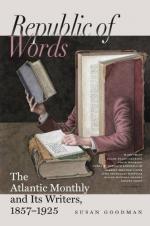“The ethereal
substance closed,
Not long divisible.”
This delicate wonder is the Cydippe. Though among the most charming of marine creatures, none is more liable to be overlooked, owing to its extreme subtilty. So unsubstantial and shadowy are they, that a lady, on seeing them for the first time, declared them to be “the ghosts of gooseberries.” Indeed, you will find them ghost-like, if you attempt to keep them, for they
“Shrink
in haste away
And vanish from our sight.”
The whole high-water line is strewn with the blanched and parted valves of the Beach Clam. Here and there yellowish streaks appear upon the gray sand, formed by the detritus of submarine shells. Among the fragments are often found perfect specimens, some of them with the living animal.
We can examine them as we go back, but now let us cross the “Creek.” It is a creek only by courtesy or an Americanism, at the present day; but when those miles of fertile fields upon the north were unreclaimed, the dank herbage hindered evaporation, and Easton’s Pond was fed by unfailing streams. Then the vast body of overflowing water swept a deep channel, which the sea, rolling far up towards the pond, widened and made permanent. Boats came from ships in the offing, and followed its course to “Green End,” with no fear of grounding; and traditionary pirates there bestowed in secret caves their ill-gotten gains.
Now, the Creek is a mere streamlet, and the flow of the tide is restricted to its mouth. With our rubbers we may ford it dry-shod; but if you choose to cross the bridge, we must wade through shifting sand, and our walk will be the longer. In midsummer the bed is dry, and almost obliterated by the drift. On the approach of autumnal rains, the farmers plough a passage for the water, to prevent their lands from being submerged.
On the east side, masses of conglomerate rock are strewn in wild confusion. By the action of untold ages the connecting cement is worn away from between the pebbles, leaving them prominent; and wherever the attrition of the sea has loosened one from its bed, the hollow has become the habitation of Mollusca and Algae.
Beyond that ponderous boulder are many dark recesses among the overlying stones. Strip back your sleeve, thrust in your hand, and grope carefully about. In this way I once grasped a prickly thing that startled me. Drawing it to light, it proved to be an Echinus, Sea-Urchin, or Sea-Egg. That one was not larger than a walnut, was shaped like a brioche, and resembled a chestnut-burr. Its color was a delicate green, verging to brown.




